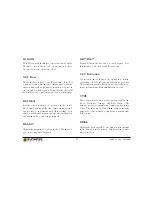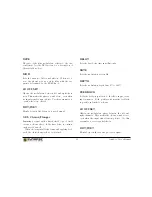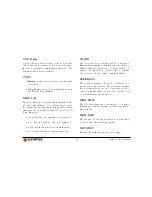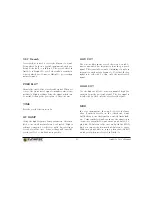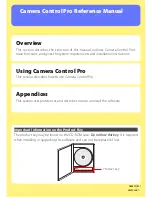
result, the first overtones of the sawtooth get at-
tenuated.
•
Pulse: A pulse waveform with adjustable pulse
width (see fig. 3.3). The MODIFIER knob con-
trols the pulse width, the center position of 50%
corresponds to a square wave.
25%
50%
75%
Figure 3.3: Pulse Width.
•
Sine-Triangle: This oscillator blends seamlessly
between sine and triangle waveform shapes. The
MODIFIER knob controls the mix ratio. Turned
fully to the left, a pure sine wave is created.
Turned to the right, only the triangle is audible.
•
Saw-Triangle: Same as above, except that this
oscillator mixes a sawtooth and a triangle wave-
form.
•
Noise:
Generates random white noise.
Use
MODIFIER to filter the noise, in order to obtain
different timbres. Note that the tuning parame-
ters have no effect on this oscillator type, since
white noise has no pitch.
•
Ringwave: Synthesizes bell-type waveforms us-
ing ring modulation. Use MODIFIER to change
the timbre of the sound.
•
WT (Wavetables): A selection of wavetables,
each containing a number of distinct waveforms,
with a smooth blend between them.
Use the
MODIFIER knob to set the position in the
wavetable.
Modulate the modifier knob with
an envelope or LFO to obtain typical wavetable
sounds.
COUNT
This parameter specifies the number of oscillators to
use per bank. Set to OFF, the entire oscillator bank is
turned off and will not consume any CPU resources.
DYAD
The DYAD parameter allows to double the entire bank
with all its oscillators and their settings, and transpose
it up by a selectable number of semitones. For exam-
ple, if COUNT is set to 5 and DYAD is set to +24,
Antidote would play back 10 oscillators in total. The
8
Antidote User’s Manual
Summary of Contents for Antidot
Page 1: ...User s Manual...



















